Types of Wood

Almendro:
Scientific Name: Dipteryx Oleifera
Other Common and Commercial Names: Brazilian Cumaru, Brazilian Teak, Brazilian Chestnut, Tonka.
Appearance: Reddish Chestnut to dark Chestnut color with well defined or golden brown and purplish streaks. Grain is straight to interlocked. Low to medium gloss. Distinctive fragrance.
Characteristics: An extremely heavy wood that shows low linear shrinkage and moderately stable volumetric shrinkage. Mechanical resistance is very high. Difficult to saw due to its hardness and interlocked grain. Air Drying is uniform and quick. Kiln Drying is easy with a mild 10 day drying program. It is resistant to decay, fungi, insect attach, and does not need to be preserved.
Weight: Basic specific gravity (ovendry weight/green volume) ranges from 0.80 to 0.91; air-dry density 62 to 81 pcf.
Janka Rating: 3540
Working Properties: Tungsten Carbide Tools recommended. Pre-drilling is usually required.
Uses: Most used in High Quality Interior wood flooring and Exterior Flooring and wood Decking but serves the furniture industry well. Premium Timber for Post and Beam and Industrial construction
Almendro is a tropical hardwood found in Panama, Nicaragua, colombia and Ecuador. Wooderra has a limited supply of Almendro from sustainably managed sources as well as salvaged wood from the man-made lakes in Panama, such as Lake Bayano.
For more information on buying Almendro or Brazilian Cumaru from Panama contact Wooderra at moc.arredoow@ofni
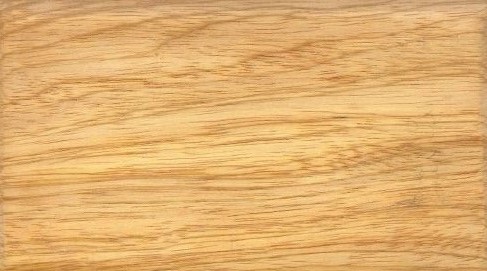
Amarillo:
Scientific Name: Terminalia amazonia
Other Common and Commercial Names: Almendro (Honduras), Canshan (Mexico), Guayabo leon (Colombia), Pardillo negro (Venezuela), Pau-mulato brancho (Brazil).
Appearance: Heartwood varies from yellowish olive to golden brown, sometimes with prominent reddish-brown stripes; not readily separated from the yellowish sapwood. Luster medium to rather high; texture medium; grain roey; without distinctive odor or taste in dry material.
Characteristics: Its density and hardness makes it fair to difficult to work with handtools and machine tools. Straight grained material planes well. Tests show the wood to be durable to white and brown rot fungus. Resistant to dry-wood termites. Variable results in seasoning; some reported easy to dry with little or no degrade; other reports of warping and checking.
Weight: Basic specific gravity (ovendry weight/green volume) 0.58 to 0.73; air- dry density 44 to 56 pcf.
Janka Rating: 2100
Working Properties: Generally reported to be somewhat fair to difficult to work with hand and machine tools; straight-grained material planes well, some tearing occurs strongly roey surfaces.
Uses: Interior/Exterior Flooring, Decking, framing, furniture and cabinet work, shipbuilding, turnery, general construction, utility plywood. It is suggested as a possible substitute for oak.
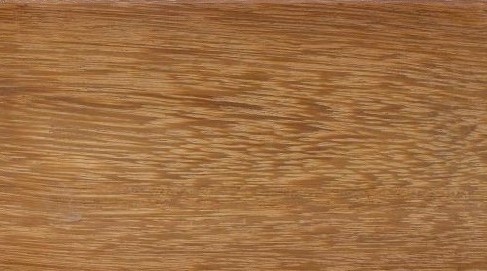
Amargo Amargo:
Scientific Name: Vataireu lundellii
Other Common and Commercial Names: Bitterwood, Angelim Faveira (Brazil), Mora (Nicaragua, Costa Rica), Amargoso (Honduras), Danto, Ramon (Guatemala)
Appearance: The heartwood when freshly cut is bright yellow but quickly turns to a dark golden brown after exposure to light. Grain is straight to interlocked with coarse to very coarse texture. It is streaked or patterned by parenchyma.
Characteristics: Heavy wood with low linear shrinkage and stable volumetric shrinkage. Mechanical resistance is ranked as medium. Sawdust may cause allergies due to its bitterness. Air drying is moderately easy with minimal defects. Excellent durability with resistance to fungi and insect attack.
Weight: Basic specific gravity (ovendry weight/green volume) varies with species from 0.55 to 0.64; air-dry density 42 to 49 pcf.
Janka Rating: 1430
Working Properties: The blunting effect is high due to silica but has good machining characteristics. Locally it is considered a semi-hard species so easier to nail and screw than other species in the class.
Uses: Because it is very durable, beautiful and resistant to termites and rotting it is used locally in interior/exterior Construction Framing, Posts and Beams, as well as Flooring and Decking.
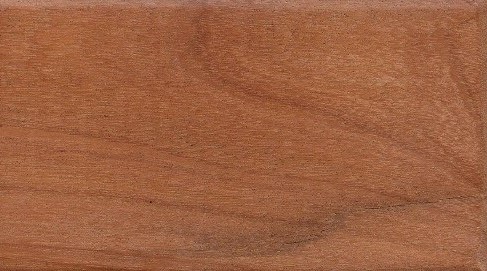
Balsamo:
Scientific Name: Myroxylon balsamum
Other Common and Commercial Names: Santos Mahogany (US Flooring market), Cabreuva Vermelha (Brazil), Red Incienso (Argentina, Paraguay), Chinese name: 香脂木豆木(红檀香)
Appearance: Heartwood is reddish brown becoming deep red with hues of purple upon exposure. It has a distinctive fragrance that makes it high in demand. Gloss is medium to high, grain is interlocked with medium to fine texture with narrow parallel bands of streaks and patterns. The growth rings are not obvious.
Characteristics: Its stability, beauty, strength and outstanding durability makes it one of the most popular hardwood flooring species in the world. It is heavy and moderately difficult to saw. Mechanical properties and mechanical resistance are high. Responds well to artificial drying using a mild drying program. Heartwood shows high natural durability and does not require preservation.
Weight: Basic specific gravity (ovendry weight/green volume) 0.74 to 0.81; air- dry density 54 to 62 pcf.
Janka Rating: 2160
Working Properties: Sawing and machining is difficult due to hardness. Carbide tooling is recommended.
Uses: Furniture, Highest quality flooring, tools, turnery, interior trims, stair treads, countertops. Often used as an ingredient in perfumes.
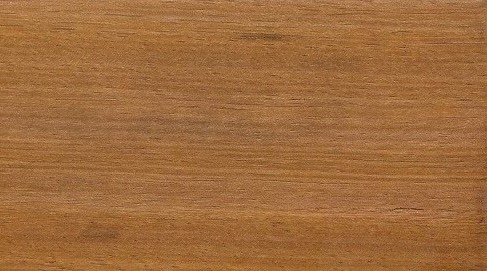
Espave:
Scientific Name: Anacardium excelsum
Other Common and Commercial Names: Espavel (Costa Rica, Nicaragua)
Appearance: Freshly cut sapwood is very light brown and the heartwood is a reddish yellow. When Air Dried the heartwood is a russet brown with layers of golden reddish cast. Medium to high gloss. Grain is straight to interlocked with medium to coarse texture. Pronounced stripes produced by attractive greenish-yellow vessel lines.
Characteristics: Light wood that shows low linear shrinkage and very stable volumetric shrinkage. Mechanical resistance is ranked as medium. Moderately difficult to Air Dry and tends to twist and warp in artificial drying. Heartwood shows resistance to both fungi and insects. Easy to preserve through pressure-vacuum treatments or immersion.
Weight: Basic specific gravity (oven dry weight/green volume) 0.41; air-dry density pcf.
Janka Rating: 470
Working Properties: It is easy to saw, poor for planning and sanding, good for shaping and mortising, and fair for turning.
Uses: Used locally for construction, concrete forms, cabinet-making, doors, furniture, and pallets/crates.
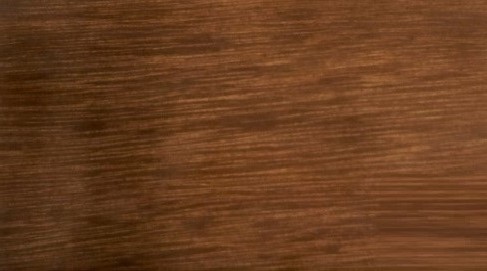
Quira / Kira:
Scientific Name: Platymiscum pinnatum
Other Common and Commercial Names: Macawood, Granadillo (Mexico, Belize, El Salvador, Honduras), Coyote, Cristobal (Nicaragua,Costa Rica), Trebol, Guayacan trebol (Colombia), Roble (Venezuela), Koenatepi (Surinam), Macacauba, Jacaranda do brejo (Brazil), Cumaseba (Peru), Hormigo (musical instruments and turning). Chinese name: 阔变豆木(南美白酸枝)蝶形花科
Appearance: Varies in colors from burgundy to reddish brown to violet. Plain sawn faces are nicely figured with black streaked grain patterns. Distinctive and pleasant fragrance. The dark heartwood has a waxy feeling, the sap wood is significantly different and very light in color.
Characteristics: Heavy and hard with low linear shrinkage and stable volumetric shrinkage. Mechanical resistance is high. Has a slow natural drying process but responds well to artificial drying.
Weight: Basic specific gravity (ovendry weight/green volume) varies with species from 0.73 to 0.94; air-dry density 55 to 73 pcf.
Janka Rating: 2450
Working Properties: Easy to work, finishes nicely, responds well to glues.
Uses: Fine furniture, cabinetry, musical instruments, turnery, joinery, pool cues and excellent for Interior Flooring. Is an excellent substitute for Cocobolo and other restricted Rosewood species.
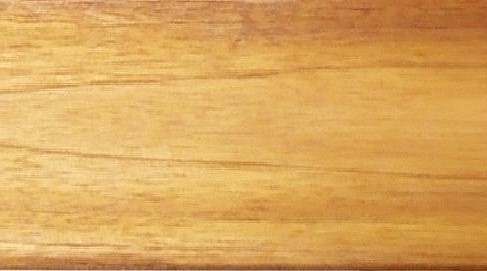
Teak:
Scientific Name: Tectona grandis
Other Common and Commercial Names: Teak (English) Kyun (Burma), Teck (French), Teca (Spanish).
Appearance: Teak heartwood dark golden yellow, turning a dark brown with exposure. Teak often very variable in color when freshly machined showing blotches and streaks of various shades.
Characteristics: Teak is known as the Noblest of Woods due to its durability and resistance to water and sun. Has the least coefficient of expansion and contraction of most hardwoods. Teak heartwood is rated as very durable with respect to decay fungi and termites. Grain straight, sometimes wavy; texture coarse, uneven (ring porous); dull with an oily feel; scented when freshly cut.
Weight: Basic specific gravity (ovendry weight/green volume) 0.55; air-dry density 40 pcf.
Janka Rating: 1155
Working Properties: Teak machines beautifully but Due to silica content dulls tools. Tugnsten Carbide tooling is recommended. Dust may cause skin irritations. Silica content variable, up to 1.4% is reported.
Uses: Teak flooring, decking, paneling. Shipbuilding, joinery, furniture, carving, cabinetwork, paneling, turnery, tanks and vats, fixtures requiring high resistance to acids.
Wooderra offers teak products such as teak flooring, teak decking, teak paneling and more from sustainably and renewable sources in Panama.
For more information on teak and teak products from Panama contact Wooderra moc.arredoow@ofni

Zapatero:
Scientific Name: Hyeronima alchorneoides
Other Common and Commercial Names: Mascarey (Columbia, Ecuador), Pilón (Costa Rica), Naciton (Nicaragua)
Appearance: Heartwood is dark brown with tones of burgandy/cherry. It is similar to Black Walnut. Straight to interlocked grain with low gloss and moderately coarse texture. Consistent color with striped tangential markings.
Characteristics: Moderately heavy wood green but is light when dried. Good resistance to fungi, decay, and termites. Low linear shrinkage and moderately stable volumetric shrinkage. Drying is fast with some warping and checking.
Weight: Basic specific gravity (ovendry weight/green volume) 0.60 to 0.67; air- dry density 46 to 53 pcf.
Janka Rating: 1220
Working Properties: Easy to saw and work with but sometimes high in silica so can be abrasive for tooling. Planing and molding is good to moderately good. Excellent for turning, mortising, boring, and sanding.
Uses: High quality furniture, flooring, ceiling and wall paneling and general carpentry and millwork. Excellent surface for engineered flooring. Used a lot for Large Rustic Table Slabs.

Zorro:
Scientific Name: Astronium graveolens
Other Common and Commercial Names: Tigerwood, Palo de cera, Palo de culebra (Mexico), Gusanero (Colombia), Gateado (Venezuela), Guarita (Brazil), Guasango (Ecuador).
Appearance: When fresh sawn, the heartwood is russet brown, orange brown, or reddish brown to red with narrow to wide irregular stripes of medium to very dark brown. After exposure it becomes brown, red, or dark reddish brown with nearly black stripes. The wood often has a striking figure caused by irregular dark longitudinal bands.
Characteristics: Grain variable, straight to roey; texture fine to medium, uniform; no distinctive odor or taste. Moderately difficult to season. Air-dries fast to moderate rate. Laboratory tests indicate the wood to be very durable in resistance to both white and brown rot organisms. These results substantiate the reputed high durability of this species.
Weight: Basic specific gravity (ovendry weight/green volume) averages 0.84 for timber from Honduras and Venezuela; material from Brazil and Colombia averages 0.75. Average air-dry density is about 60 pcf from these four sources.
Janka Rating: 2160
Working Properties: Not difficult to work in spite of its high density, finishes very smoothly, and takes a high polish. The wood weathers well and is highly resistant to moisture absorption. It is reported to be difficult to glue.
Uses: Interior/Exterior Decking and Flooring. Among the most outstanding heavy, durable construction timbers, also highly favored as a fine furniture and cabinet wood. Cut for decorative veneers, it is used for specialty items such as knife handles, brush backs, archery bows, billiard cue butts, turnery, and carving.
Leave Reply